Many years ago my parents decided to try and capture the past, disillusioned with our modern disposable society they saw the beneficial aspects of a life style based on how things were back in 1910. They wanted to try and keep some of these things alive, not only keep them alive, but also share them with others, educate people about how things were done around 1910.
So before my fathers retirement they set about creating Wynella, they bought a period house built in 1914 from a small country town, had it transported down to Denmark, then set about restoring it to it’s original condition.
As with most houses of this period, the main building is surrounded by large verandas, these help to keep the house cool by keeping the sun off the wall of the house for most of the day. In this photo you can see the kitchen and maids room off the right side of the veranda, and you can see at the back off the rear veranda is the bathroom, toilet and laundry.
The kitchen doesn’t have many features you would find in a modern house. There’s a tap in the bottom right of this photo, this is comes from the rain water tank just outside. The stove has a large wood fired dual oven which also heats your water. Now remember, this is a ‘living museum’ my parents lived in the museum just as they would have lived here in 1910. There’s no fridge, a Coolgardie safe sat on the veranda just outside the kitchen, this uses evaporation to keep the food cool within the safe. The safe was surprisingly effective and with a little planning you can live comfortably with a Coolgardie safe and a meat safe. Most of the food my folks ate while in Wynella, were period foods or as close to it as they could get, simple foods, home made, using basic ingredients. This was actually quite a fun part of the research and living within the museum, what you could and couldn’t have. You couldn’t have Vegemite as it wasn’t invented until 1922, but you could have Marmite.
The bathroom is very simple, in those days claw foot baths were the norm, lately they have become trendy again. Home made soap, sea sponges, loofah’s or linen cloths were used for washing. Toothpaste was a more difficult option for the living museum, you just couldn’t buy the same types of toothpastes from that period, they tried making some but it was pretty horrible, so normal modern toothpaste was used yet hidden away. The laundry was to the rear of the bathroom, no washing machine of course, a large copper for boiling up the clothes and linen, wooden baskets and metal buckets, a wash board and a mangle to squeeze water out of the washing.
The layout of the main house is very simple, a large hallway from the front door straight through to the back door with four large rooms, one in each corner of the house. Each room has 2 large french doors leading out onto the veranda. This means the whole house can be opened up to allow breezes through to cool the house, essential in the Australian climate over summer.
Inside the front door and to the right is the formal lounge room. Some of the colours in here might seem a little over done and gaudy, but this was meticulously researched and bright colours and bold patterns like these were common in the day.
The other end of the lounge room, looking towards the front of the house. Once again, notice the doors leading out onto the veranda. I’ll be making a further post about Wynella tomorrow.

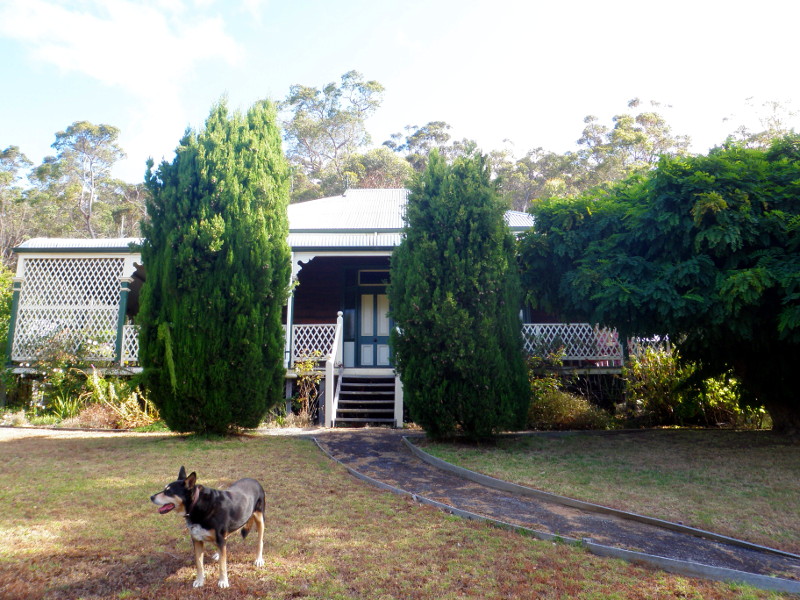
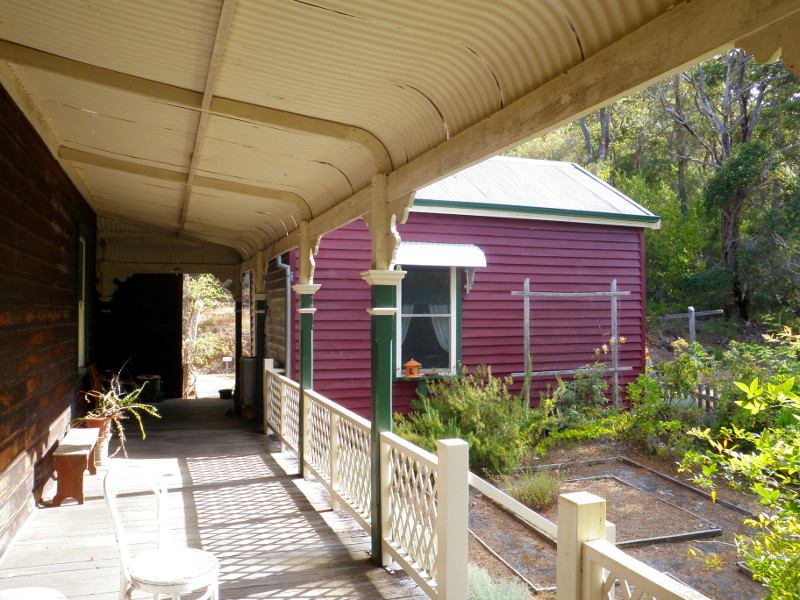

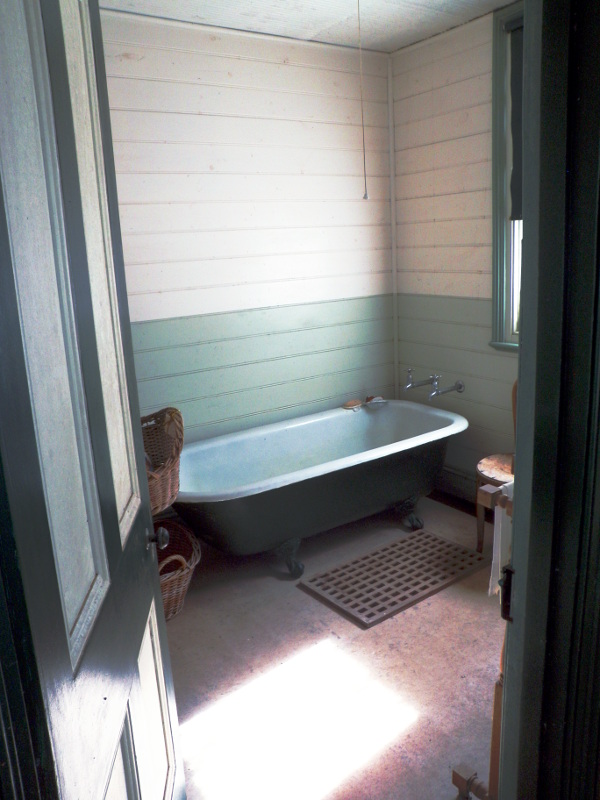
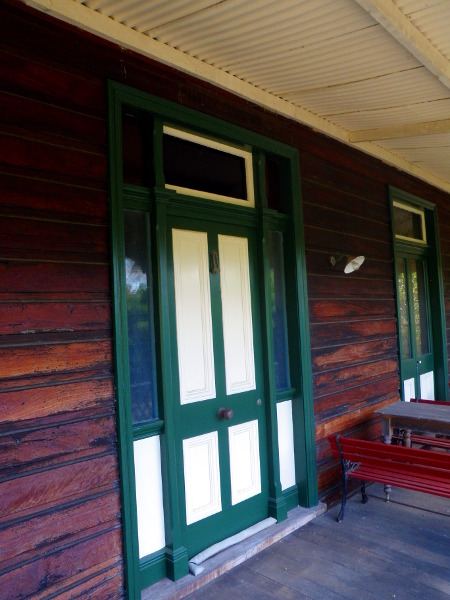
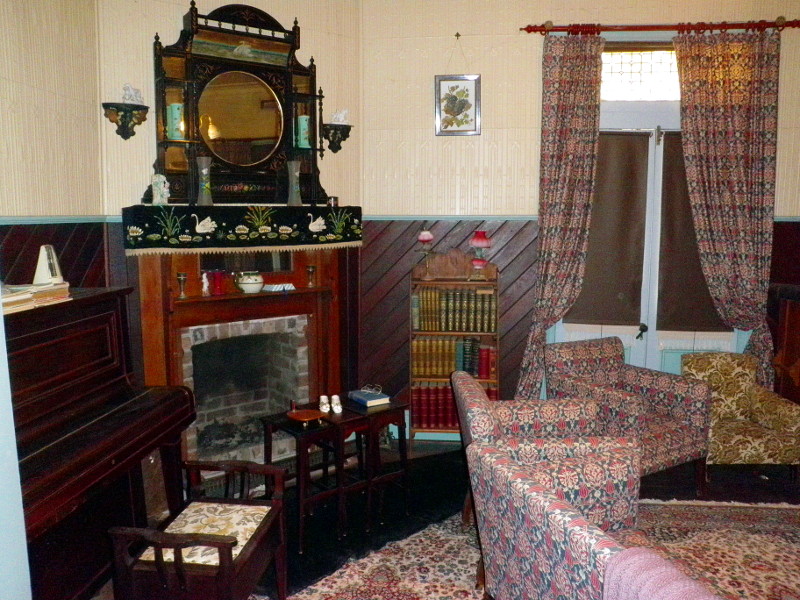

No Comments